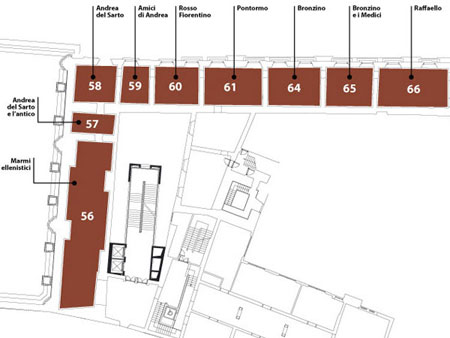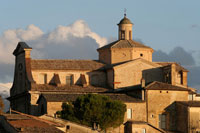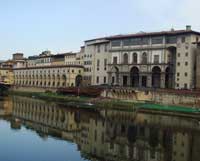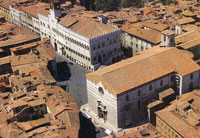Andrea del Sarto, Madonna delle Arpie (Madonna of the Harpies), 1517, oil on wood, 208 x 178 cm
|
|
Firenze | Galleria degli Uffizi | Andrea del Sarto, Madonna delle Arpie (Madonna of the Harpies), 1517, oil on wood, Galleria degli Uffizi, Florence |
| Perhaps the most famous work of Andrea del Sarto is the altarpiece painted for the nuns of San Francesco dei Macci, known as the Madonna of the Harpies. According to the contract signed on May 14, 1515 the picture was to depict the Madonna and Child crowned by two angels and flanked by St John the Evangelist and St Bonaventure, and to be delivered within a year. But in fact the work is dated 1517, and shows St John the Evangelist and St Francis on either side of the Madonna and Child on a high polygonal pedestal. The latter is decorated at the corners with monster-like figures (the so-called Harpies), while in the centre, beneath the artist's signature, are the opening words of a hymn to Our Lady of the Assumption. We therefore have not the Coronation of the Virgin but the Virgin of the Assumption. These variations on the original commission, and the subject itself, which is not a traditional Madonna and Child Enthroned between Two Saints, but a highly unusual presentation of the Virgin, full-figure on that enigmatic pedestal with the images of the "harpies," have led to a lot of thought and attempted explanations on the part of all critics. The most recent interpretation is that it is a depiction, based on the text of the Book of Revelations, of the Virgin triumphant over evil, symbolized by the monstrous figures, the "harpies," which are in fact the "locusts" mentioned in Revelations; and besides that, bears witness to the cult of the Virgin by the clients, the conventual Franciscans. Having removed the layers of dirt and overpainting, the 1984 restoration has re-established the exceptionally rich colouring of the work, praised by Vasari as being "of singular and truly rare beauty." The figure of the Madonna, wrought into a composed chiasmus in order to balance the weight of the Child (who on the other hand is lively, smiling, and as ambiguous as Rosso's putti), lights up the centre of the picture with the intense rose-colour of her robe tempered by harmony with the pale blue of her mantle, and with the brilliant yellow of the light fabric draped over her shoulders beneath the beautiful drapery of the white veil covering her head. On her left is the sculptural St John (painted from a terracotta model by Sansovino) swathed in a cinnabar red mantle linked to the lilac of his robe by means of a highly refined drapery, while on the other side the figure of St Francis strikes a clear note that emerges by subtle varieties of tone from the architectural motif of the background; while in the background one can once more see "the smoke of transparent clouds veiling the architecture and the figures, that appear to move" (Vasari): a warm, mysterious halo, made of colours and of shadows, that behind and around the figures impels an atmosphere that implies the rich spiritual message brought to us by this painting. The Madonna of the Harpies is truly a milestone in the career of Andrea del Sarto, and bears witness to the level of maturity of the most significant artistic experiences of the early 16th century: the "atmospheric" painting of Leonardo, the meditation recently infused with a new freshness in the "grandiose" manner of Michelangelo, the elegant and solemn classicism of Fra Bartolomeo endowed with a new intensity of colour after his stay in Venice, the experience of Raphael's work in Rome (and in this case the Sistine Madonna is usually mentioned); these are all motifs that come together in a single stylistic solution, the greatness of which was immediately recognized in Florence and elsewhere. This general admiration was shared almost two centuries later by Prince Ferdinando de' Medici, who acquired the picture for his collection in Palazzo Pitti, offering the nuns in exchange for it not only a copy of the picture done by Francesco Petrucci, but also the embellishment, and practically the remodeling and restoration of all the decoration of their church by Foggini.[1]
|
| Andrea del Sarto, Madonna delle Arpie (Madonna of the Harpies, detail), 1517, oil on wood, 208 x 178 cm Galleria degli Uffizi, Florence[3] |
Andrea del Sarto in the Galleria degli Uffizi
|
||
|
|
|
Andrea del Sarto, Madonna delle Arpie (Madonna of the Harpies, detail)), 1517, oil on wood, 208 x 178 cm
|
||
|
||||
|
||||
|
||||
Podere Santa Pia |
Podere Santa Pia, garden view, April |
View from terrace with a stunning view over the Maremma and Monte Christo |
||
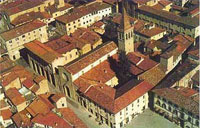 |
||||
Montefalco |
Sansepolcro |
|||
Vasari Corridor, Florence |
Perugia |
Florence, Duomo |
||
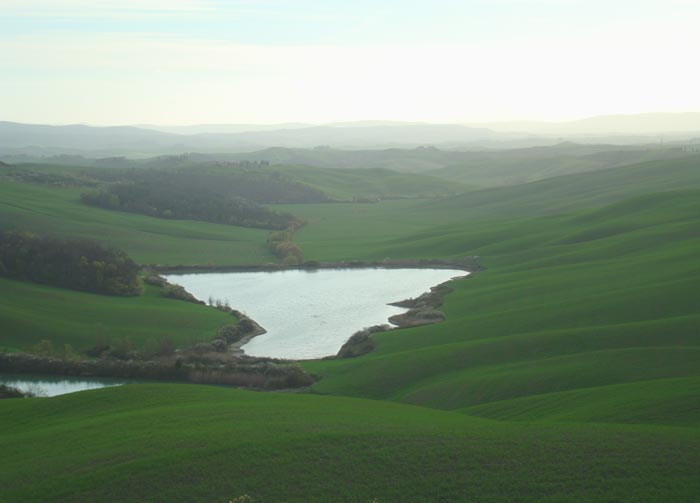 |
||||
Crete Senesi, surroundings of Podere Santa Pia |
||||
Podere Santa Pia is situated in the unspoiled valley of the Ombrone River, only 21 kilometres from Montalcino. This valley is famous locally as being of great natural beauty and still very undeveloped.
|
||||
|
||||



